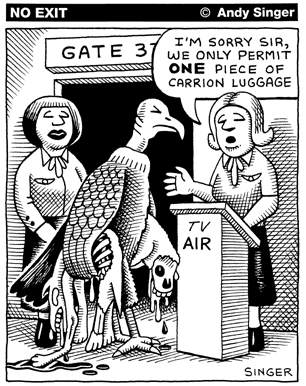Carry-on Baggage Advice
There are two big reasons why traveling without checked bags makes sense. First, with rare exceptions, there are no fees charged for carry-on bags. Second, checked bags or their contents are more likely to be lost, stolen, misplaced, or damaged.
Below are links to pages with detailed advice about both checked and carry-on bags. Below that table of links are some of the key suggestions for dealing with your carry-on bags.
Additional baggage pages
A reasonable approach to carry-on baggage is keep in mind three things: think small, think smart, and think safe. Keep in mind the following points when you pack and you will likely avoid any problems with your carry-on baggage while you are on the aircraft.
- The maximum size carry-on bag for most airlines is 45 linear inches (the total of the height, width, and depth of the bag). Anything larger should be checked.
- No oversize packages or luggage can be stowed onboard.
- Stow only your essentials (such as prescriptions, personal hygiene items, passports and other documentation) and valuable items, such as jewelry or cameras, in your carry-on bag.
Think Small
- Plan to check more of your baggage and carry less with you in the cabin.
- Check with your airline before packing to determine its carry-on guidelines regarding the number of items you may carry and the maximum size of those items.
- Keep valuable or hard to replace items like money, jewelry, computers, computer data, and important papers with you in carry-on baggage and not in checked baggage.
- In certain situations the airline may require most or even all of your bags to be checked, so be prepared to do so.
Think Smart
- Carry-on items which may fall from overhead bins can injure you or other passengers during flight or in the event of an emergency evacuation.
Head Injury Risks from Overhead Baggage - Stow heavy items under the seat in front of you, not overhead.
- Don't stack items in the overhead storage bin.
- If an emergency evacuation is necessary, leave your carry-on items on the plane. Retrieving personal items may impede the safe evacuation of passengers.
- Remember, be safety conscious when stowing your carry-on items.
Think Safe
- Make sure that you keep items critical to your health and well being with you in the cabin and not in checked baggage.
- If travel with eyeglasses or sunglasses, make sure your have a sturdy eyeglass case for each pair to protect them while they are in your carry-on or in another bag in the overhead bin.
- Plan for any special medical needs. Remember that if you need something for medical reasons, in most cases you will be allowed to take it with you in your carry on baggage, even if it is one of the items normally prohibited in the cabin.
- If you are a diabetic, make sure you pack with you medical supplies, emergency snacks, and other items that diabetics should carry when traveling.
Think Healthy
Other Baggage Resources
TSA restrictions
Top 10 baggage tips
Protect your laptop
Common airline baggage fees
Top 10 baggage fee tips
Top 10 baggage claim tips
Cabin safety tips
Overhead baggage risks
Cartoon by Andy Singer
Things You Should Not Bring on Board
For more videos, visit the AirSafe.com YouTube channel.
http://airsafe.com/issues/baggage/carryon.htm -- Revised 29 May 2015
